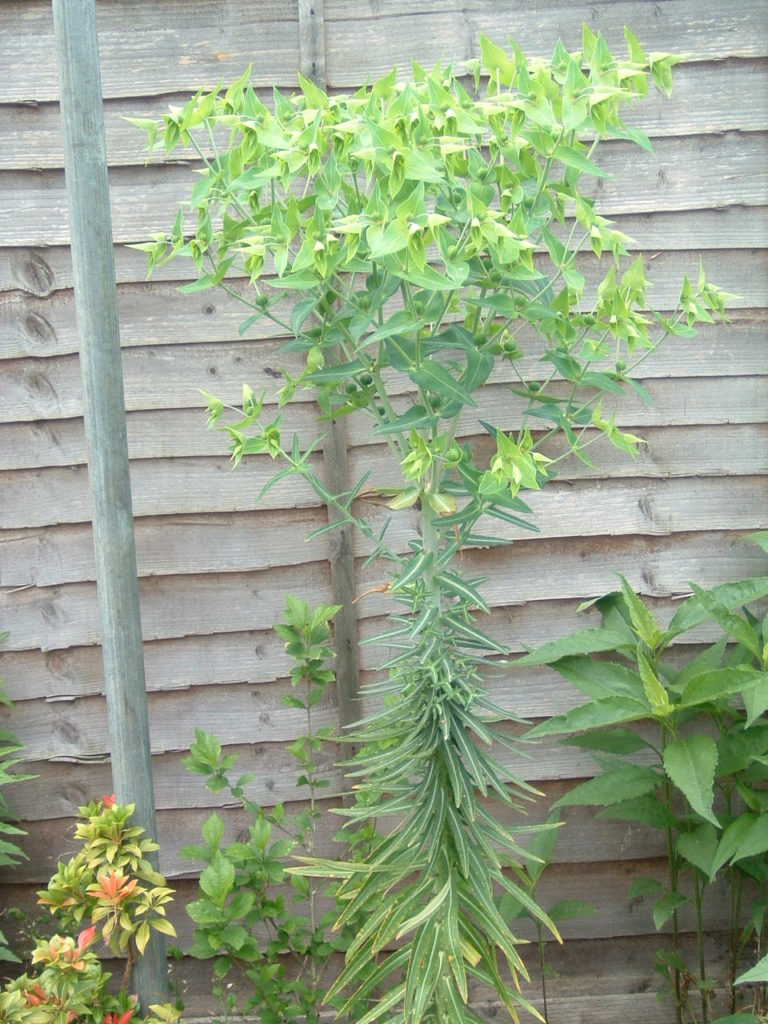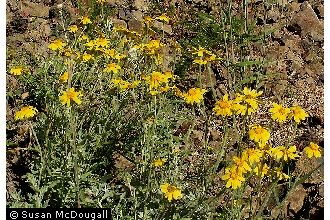Invasive: Mole Plant (Euphorbia lathyrus)
Characteristics: Mole plant—a.k.a. gopher spurge or caper spurge—is an erect biennial (occasionally annual) herb, native to the Mediterranean region and eastward to western China. It can reach up to 1.5 meters in height, with a reddish-purple stem that becomes blue-green toward the top. The leaves are arranged in opposite pairs, and are lanceolate, 5-15 cm (2-6 in) long and 1-2.5 cm broad, blue-green with a waxy texture and distinctive pale greenish-white midrib and veins. Flowers are yellow-green, 4 millimeters across, and lack petals; they are surrounded by more obvious heart-shaped bracts of the same color. Seed capsules are brown or grey when ripe, and come in clusters of three, containing numerous seeds. Like many plants of the genus Euphorbia, mole plant contains a milky, sap-like latex that is poisonous to animals (including humans) if ingested, and causes dermatitis in humans (especially in sensitive areas such as the eyes). The names “mole plant” and “gopher spurge” come from the plant’s purported ability to repel these animals, though its effectiveness at this is not well established (lots of “is said to” and “is known to,” but little to no supporting evidence).
Spread: Mole plant reproduces readily by seed, and can spread rapidly in gardens, disturbed areas such as roadsides, and adjacent natural areas.
Control: Most infestations can be dug out by hand or with a hoe. If digging by hand, be sure to wear gloves to avoid contact with the latex; this is best done before seeds ripen, both to prevent re-infestation and to avoid having seed capsules explode near your eyes.
Native Replacements: Oregon sunshine (Eriophyllum lanatum—pictured) is a lovely, drought-tolerant perennial that will bloom for much of the summer and do well in habitat occupied by mole plant. Stonecrops, such as Sedum spathulifolium and Sedum lanceolatum, would also make excellent ground-cover replacements for mole plant.


